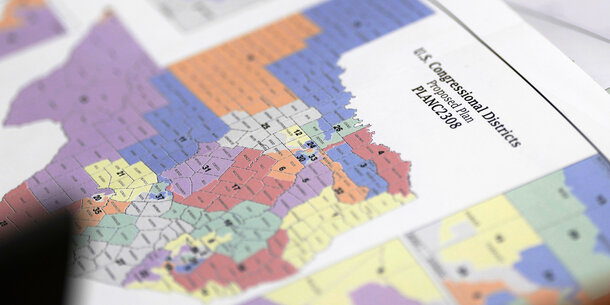Every 10 years, states and local governments redraw electoral districts to comply with the constitutional requirement that districts must have roughly the same population. In redrawing maps, states and localities have long relied on redistricting data sets from the Census Bureau that break down the population to the “census block,” a small geographic unit about the size of a city block.
Under normal circumstances, states would have received this block-level data by the end of March. But the Covid-19 pandemic required the Census Bureau to alter its operations and the timeline for releasing population figures. Under the modified schedule, the bureau plans to make redistricting data available to states starting in August 2021.
Many states have or will need to adjust their redistricting deadlines to accommodate this later date. Because of this timeline adjustment, a few states are considering whether it might be possible to use alternative data sets, such as the Census Bureau’s American Community Survey (ACS), to draw maps. Two states, Oklahoma and Illinois, have already done so.
But creating final maps that are not based on census data would be ill-advised and expose states to litigation given significant differences between census population data and ACS estimates.
How ACS data differs from census data
The ACS is an annual survey of around 2.5 percent of households that is used to produce estimates about the characteristics of American communities. It covers a broad array of topics, such as housing, employment, citizenship, race and ethnicity, and other demographic information. The ACS plays a valuable role in helping local officials and residents understand changes taking place in their communities, and it influences the annual allocation of over $675 billion in federal and state funds.
By contrast, the census is charged once a decade with counting everyone living in the United States at the location where each person usually lives. The census asks a limited number of questions about household composition, including the sex, age, and race of each person.
Equalizing district populations during the redistricting process
Census data should be used to draw final redistricting maps because census data is based on an actual count of the U.S. population and provides greater geographic specificity and accuracy than ACS data. ACS estimates, by contrast, are just that: estimates that come with the margins of error associated with any survey. That margin of error makes it hard to draw maps with the population precision required by the Constitution. Indeed, the Census Bureau itself says that the ACS is better suited to providing demographic information than total population figures.
Plus, as mentioned above, the smallest unit used for reporting ACS data is significantly larger than the units used to report census data. This also makes it more difficult to use ACS data to satisfy the constitutional requirement that districts have roughly the same number of people and at the same time satisfy other legal requirements for redistricting. For these and other reasons, the Brennan Center joined Asian Americans Advancing Justice (AAJC), MALDEF, and over 50 other civil rights and good government organizations in releasing a statement explaining why ACS data should not be used to draw final district maps.
Appropriate redistricting uses for the ACS
Despite its unsuitability for drawing legally compliant final maps, the ACS can be a very useful data source for Voting Rights Act (VRA) compliance and certain preliminary map-drawing tasks.
The VRA requires states to draw districts that give communities of color an equal opportunity to elect their candidates of choice. Part of that process involves looking to see whether particular racial groups are sufficiently large to sustain districts. The ACS estimates demographic characteristics helpful to making this determination. But, even in this context, the ACS serves as just one component of a broader inquiry that relies on numerous data sources, including the census.
States can also use the ACS to prepare for redistricting while they wait to receive final census data. For example, the ACS can be used to identify areas with changing populations. It can also be a helpful tool in defining communities of interest given the level of racial, ethnic, social, and economic detail that it provides. Using the ACS to help streamline these preliminary tasks could make for a smoother redistricting process that produces fair maps once census data is available.





